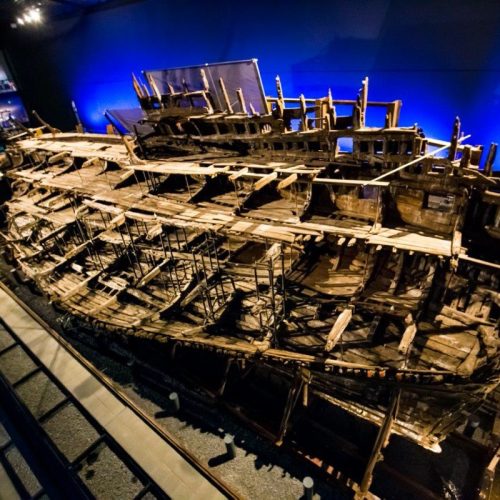
This article was originally published on ARS Techica - Science. You can read the original article HERE
Dem collarbones
A schematic to illustrate the approximate location from which the measurements were taken; an example right clavicle from each age group. Credit: S.I. Shalnkland et al., PLOS ONE 2024
Most of the recovered human remains were jumbled up, but over the years, preservationists have partially reconstructed some 98 individuals, all men between 10 and 40 years of age. The new study focused on 12 clavicle (collar) bones, which links the upper limb to the torso and is one of the most commonly fractured bones. Per the authors, it's one of the first bones to start ossifying in utero, but the last to fully fuse, usually between 22 and 25 years old.
That was a boon for determining the age of the Mary Rose crew members, but the authors thought differences in bone mineral and protein chemistry could also shed light on bone changes related not just to aging, but also to lifestyle or disease, and even whether a crewman was right- or left-handed had an impact on those changes. They specifically looked at changes in phosphate, carbonate, and amine (the foundation of collagen), all major components of bone.
The results: mineral content of the bones of all 12 men increased with age, while the protein content decreased. Those changes were more significant in right clavicles rather than left ones, an intriguing result suggesting a preference for right-handed crew members. The authors note that this might be because, at the time, being left-handed was often associated with witchcraft. Perhaps those right-handed crew members put more stress on their right side while performing their duties, and this, in turn, asymmetrically altered their clavicle chemistry.
“Having grown up fascinated by the Mary Rose, it has been amazing to have the opportunity to work with these remains," said co-author Sheona Shankland of Lancaster University. "The preservation of the bones and the non-destructive nature of the technique allows us to learn more about the lives of these sailors, but also furthers our understanding of the human skeleton, relevant to the modern world.”
PLoS ONE, 2024. DOI: 10.1371/journal.pone.0311717 (About DOIs).
This article was originally published by ARS Techica - Science. We only curate news from sources that align with the core values of our intended conservative audience. If you like the news you read here we encourage you to utilize the original sources for even more great news and opinions you can trust!











Comments